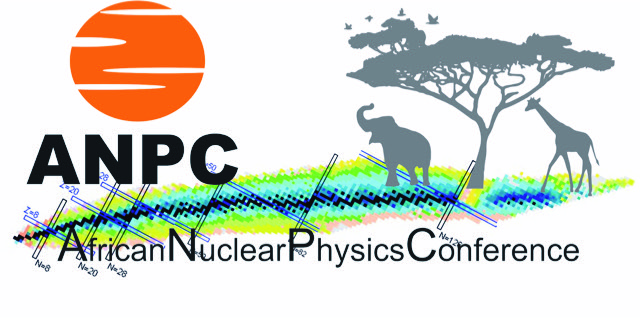Speaker
Description
The shape coexistence phenomenon is prevalent in the Z~34 region, with multiple neutron-deficient even Ge [1] , Se [2] and Kr [3] isotopes each exhibiting the characteristic low-lying coexisting $0^+$ bands which display quadrupole deformation different to that of the ground states.
In the selenium isotopes, coexisting shapes $^{72-78}\text{Se}$ seem to show a prolate ground structure with coexisting oblate excitation [4,5,6], while in $^{68}\text{Se}$ the oblate structure appears to have become the ground state [7]. In $^{70}\text{Se}$ however, not only is the ground state shape uncertain [8], a low-lying $0^+$ state has yet to be identified. Recent work in neighbor Kr isotopes has pushed to $^{70}\text{Se's}$ isospin partner $^{70}\text{Kr}$ and identified states thought to be part of a shape coexisting structure [9]. With our picture of the region rapidly evolving the uncertain structure of $^{70}\text{Se}$ stands out as a clear remaining question.
The SPectrometer for Internal Conversion Electrons (SPICE) is one of the latest generation of tools for studying Internal Conversion Electrons (ICE) [10]. The spectroscopic study of ICE is one of the primary means available for the study of electric monopole (E0) transitions, which are themselves a key observable in the study of nuclear shapes and shape coexistence.
Using SPICE an experimental investigation was undertaken at the TRIUMF ISAC-II facility which aims to confirm the presence of the anticipated coexisting $0^+$ band-head in $^{70}\text{Se}$. Details of the device and experiment will be presented, alongside the latest results of analysis.
[1] A.D.Ayangeakaa et. al. Phys Lett B, 754:254 (2018)
[2] E. A. McCutchan, Phys. Rev. C 87:014307 (2013)
[3] E. Clement et al., Phys. Rev C 75: 054313 (2007)
[4] A.E Kavka et al., Nucl. Phys. A 593:177 (1995)
[5] R. Lecomte et al., Phys. Rev. C 18:2801 (1978)
[6] J. Henderson et al., Phys. Rev. Lett. 121:082502 (2018)
[7] S.M. Fischer et al., Phys. Rev. Lett 84: 4064 (2000)
[8] J. Ljungvall et al., Phys, Rev. Lett 100: 102502 (2008)
[9] K. Wimmer, Phys Lett B, 785:441 (2018)
[10] M. Moukaddama et al. Nuc. Inst. Meth. A, 905:180 (2018)

